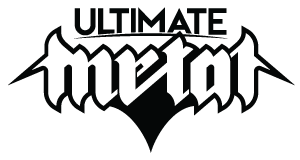It wasn't a marketing campaign, it was a coup within the organization. The NRA kept their mouths shut through the many gun laws passed from the 30s up until the 70s, at which point some members had enough, causing a temporary schism that ultimately won out for reinventing the NRA as an organization to protect guns from over-regulation. The use of hysterics/sensationalism is nothing special. Just look at every civil rights group that thinks electing Trump and some neckbeard running into a crowd in his Dodge is literally Kristallnacht v2.
I disagree with the claim that it wasn't a marketing campaign--since the early twentieth century, the NRA has been an active media force, publishing cartoons, columns, and newsletters. Also, I think your history's off. The NRA commandeered the gun rights movement as early as the 1930s, posting advertisements meant to elicit nationalistic pride and emotional fervor over gun regulations and actively promoting gun ownership.
The NRA was, admittedly, far less radical in the early-20th than it is today. In the 1930s they openly opposed concealed carry, for example. But this doesn't change the fact that they published political cartoons, weekly columns, and other forms of media meant to sway public opinion over firearms. They weren't simply promoting gun safety and familiarity, in other words.
Buying a lot of something as a means rather than as an end isn't enthusiasm for the thing. No one has demonstrated he was buying guns for any other purpose than a mass killing.
I know, I said as much. I also said that over fifty guns suggests a level of enthusiasm beyond "I need guns to kill people."
I know the argument is "you can't have gun crime/gun violence without guns", but this is a mere tautology. In creating a model of gun violence, you have to include all the data points where guns are not used in violence/crime, as well as when they prevent violence/crime. Due to the sheer number of guns in America, and the overall paucity of relative violence or crime commissioned with a gun, the relationship should be effectively zero.
I think this is a misleading argument. You're saying that yes, there's more gun violence in America; but there are also way more guns, meaning the ratio of gun violence per number of guns goes way down. Even if that's the case, it's not an argument against doing something about gun accessibility and ownership.
I know that my argument deployed a tautology, but the tautology isn't where my interest lies. I'm interested in the effect that mass consumerism of firearms has on the availability and accessibility of firearms, and how this leads to a situation in which the tautology is applicable.
>fifty is overkill
By what standard?
By the limits of the scenario. Different guns serve different purposes, but within the time frame and physical space that the Las Vegas shooter was active, there was no way he could have expected to use every single weapon he purchased. He may have entertained some fantasy of using each gun, and he may have even switched between guns arbitrarily; but it's more than likely that his purchasing spree and any variability during the shooting itself was driven to some extent by an enthusiasm for the guns themselves.
But it's all speculation, I admit; I'm just commenting on the sheer number of weapons he bought.

